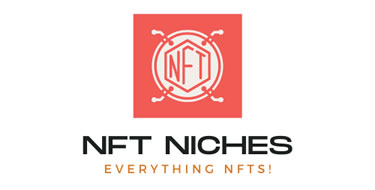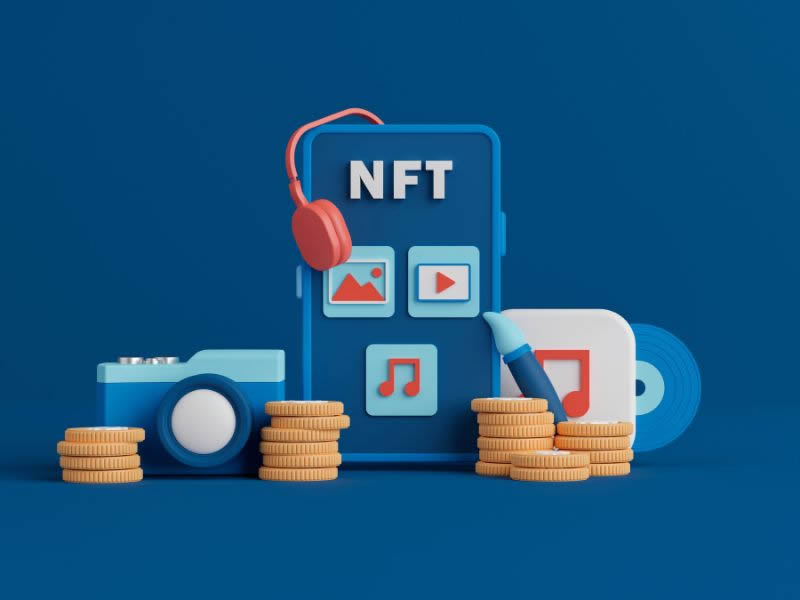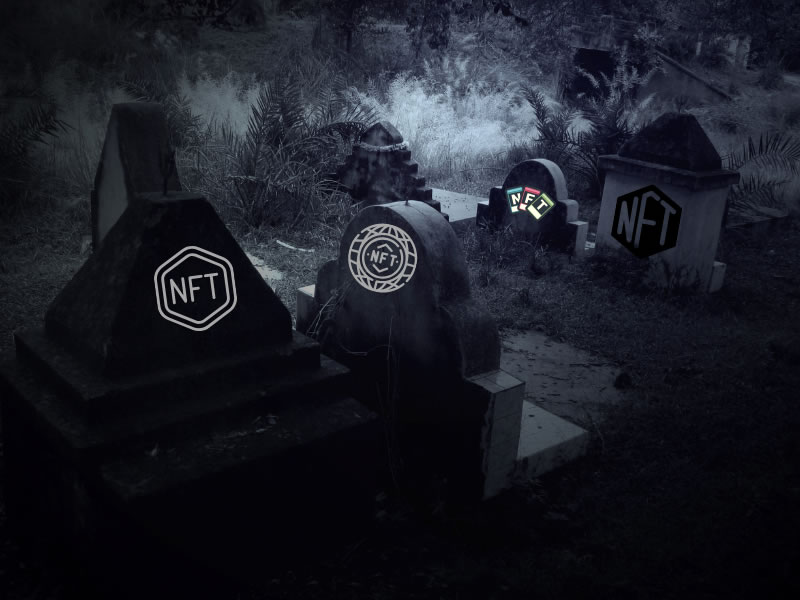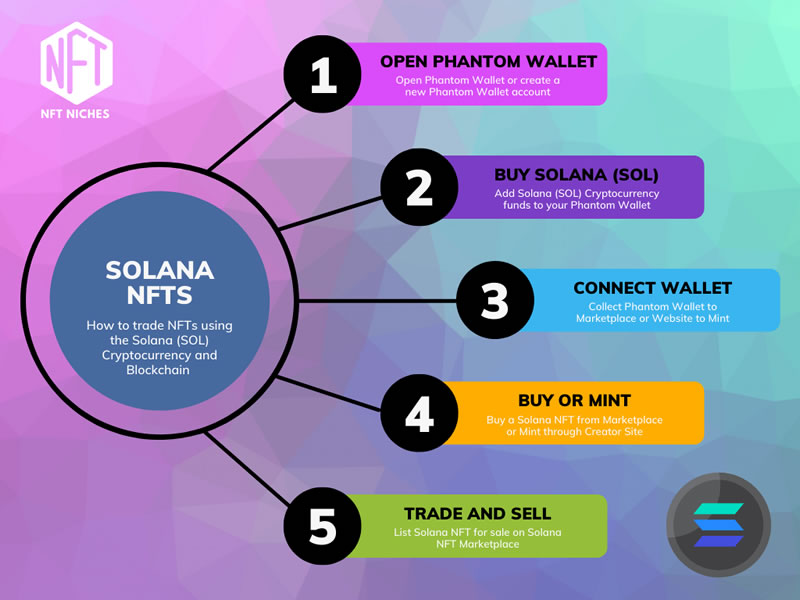NFT language is almost a completely different language, brand new terminology has been invented for the industry, but the term ‘floor price’ isn’t just related to NFTs.
This may help give an immediate clue as to what an NFT Floor Price is.
The floor is generally the lowest part of a room, and for an NFT collection it also represents a lowest element too.
So, what is an NFT Floor Price?
An NFT Floor Price is the lowest price an individual NFT in the collection can be purchased for. A high floor price shows a growing NFT collection in demand, whereas a low floor price shows the popularity of an NFT collection is decreasing. The floor price is usually driven by supply and demand.
An NFT Floor price is one of the most valuable pieces of information about an NFT collection.
It’s the value that displays the equilibrium between demand and supply.
Ok, let me simplify this. Demand and supply drive many markets around the world, from the homes we purchase to the gas we buy.
When supply is low, and demand is high then prices rise because the demand will often mean people will pay a higher price. When demand is low, and supply is high, then prices often fall.
The floor price, and the trend of the floor price over time, will help you see if demand is growing in the NFT Collection or whether it is falling.
Many NFT buyers are specifically looking for NFT collections with an increase floor price, as this means increased demand in the project. Those buyer’s intention is to buy a growing project with the intention of selling later at a higher price if demand continues to grow.
There are lots of NFT practices and hacks in relation to NFT floor prices which we will cover in this article, and help you understand and take advantage of the information that may help your NFT buying process.
Why the NFT Floor Price is important
One of the first things looked at when researching an NFT collection is the floor price.
It says a lot about the project. Does it have value and demand behind it, is it a potential to grow further or is the demand lower than the supply.
Floor Price Ranges
As a general rule, any NFT collection with a floor price of above 1 ETH is in demand, will usually have more than 15% of the NFTs in the collection owned by NFT holders of blue-chip collections like Bored Ape Yacht Club, Crypto Punks, Moonbirds etc.
An NFT project with a floor price between 0.1 ETH and 0.99 ETH certainly has momentum and will have several interested buyers and potential buyers watching the collection. To buy in one of these NFT collections means spending between $200 to nearly $2,000 per NFT.
On the other hand, an NFT collection with a floor price between 0.01 ETH and 0.09 ETH are the smaller projects where blue-chip holders will be lower. Although these projects are much smaller in nature and will usually not have a recognized team behind, it isn’t to say they have no value. These collections can escalate in value quickly.
Lastly, we have those NFT collections with a floor price of 0.01 ETH or lower, which is less than $20 an NFT. These NFT collections will have low demand, high supply and unless the NFT project goes viral, gets the backing of an influencer, or the NFT project announces the onboarding of a high-profile name, they are likely to reduce to $0 within a few short weeks.
All of this can usually be assessed within a simple glance at the current NFT floor price of an NFT collection.
What an increasing NFT Floor Price means
When the NFT floor increases it usually means demand is increasing and NFT holders will increase their price – which in the NFT space, especially on OpenSea, means the NFT holder needs to delist their NFT and then set a new higher price.
A high number of NFT holders delisting their NFTs in a collection is another sign of potential growth in the NFT collection. It usually means they are delisting their NFT at the current price to list at a higher price. There is a way we can check this trend for free, which we will cover later in this article.
What a decreasing NFT Floor Price means
A decreasing NFT floor price usually means the demand is low and this is where NFT holders attempt to find a buyer by trying to undercut the lowest priced NFT in the collection.
A quick glance at the current floor price reveals partial information about an NFT collection but not all of course. Analyzing the floor price history is a way to identify the trends of the buyers and sellers in the collection which we can use to our advantage.
Analyzing NFT Floor Price trends
Just like analyzing the fluctuating prices of a share to assess its short-term future growth potential, we can do the same with NFT floor prices.
One way to keep track of floor prices to look for trends is to set an alarm on your cell phone for every 30mins, refresh the NFT collections page and then manually make a note of the current floor price.
This process works but as you can see it isn’t very efficient, is time consuming and very impractical to be woken from sleep every 30mins to check a floor price!
Fortunately, there are NFT tools available that are tracking the floor prices for us.
Although getting up to the minute data on any NFT collection usually requires a membership or subscription to the NFT tool, or to hold an NFT to one of the NFT tools, many of them provide data as recent as 15mins ago for free.
It isn’t idea for rarity sniping, or trait grabbing, but it is perfect adequate to monitor the floor price of an NFT collection over a couple of days and see whether demand is increasing (the floor price is rising) or demand is decreasing (the floor price is decreasing).
Once such tool that allows us to monitor the floor price of an NFT collection with a 24-hour history is Icy.Tools.
As an example, let’s look at one of the biggest, and most surprising, viral NFT collections of 2022. GoblinTown.wtf.
Based on the logic of the NFT industry at the time this project should never have succeeded. It didn’t slowly build up a long-term community on Discord, or have a whitelist, or have doxed founders or even a roadmap.
What though it lacked in industry standards it made up for with creativity and imagination which captured an audience and quickly took this collection from a free NFT to a floor price equivalent of $12,000 per NFT!
Here is the past 24-hour floor price history of Goblin Town:
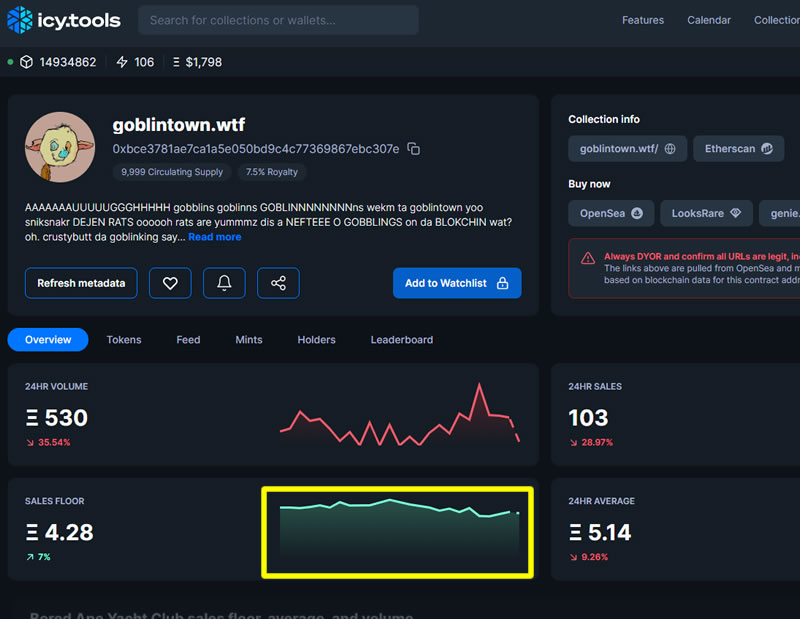
Although not hugely exciting, the chart does show over the past 24 hours the floor price, which we know is the lowest price we would have to pay for an NFT to buy in to this collection, is currently falling.
Let’s have a look at another example, this time meme NFT collection Troll Town:
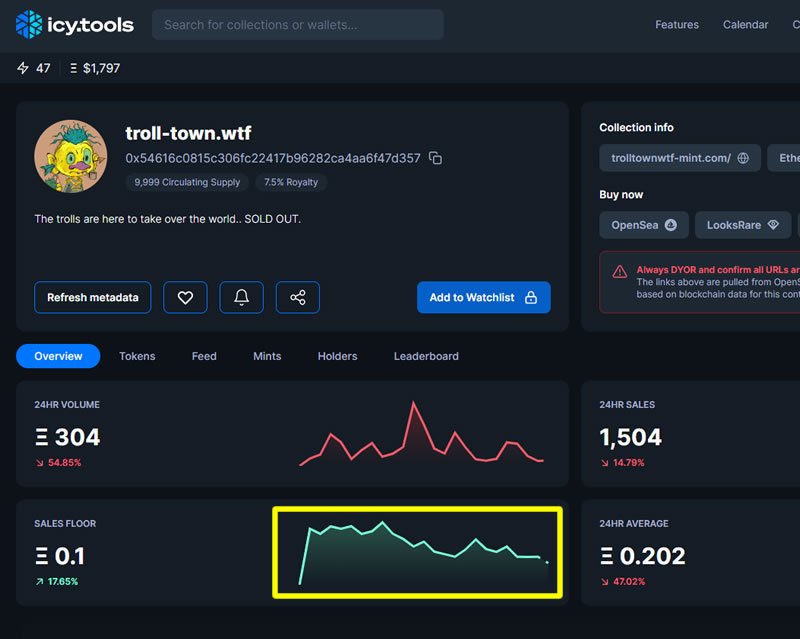
Here we see a same reducing floor price but at a much faster rate, hence the steeper chart. During the past 24 hours the floor price has fallen from 0.25 ETH ($500) to 0.085 ($170) meaning the number of people wishing to sell is higher than those wanting to buy.
Are all NFTs for sale at the Floor Price?
The NFT floor price represents the value of the lowest priced NFT in the collection, but it does not mean every NFT in the collection is for sale at that price.
Just 1 NFT out of 10,000 NFTs in the collection could be on sale for 0.1 ETH but every other NFT could be on sale for 0.2 ETH or more.
Rare NFTs in the collection usually have much more value than more common NFTs in the collection, and the price of those will be higher.
For example, if we look at the Bored Ape Yacht Club collection the current NFT floor price is 94 ETH ($188,000!):
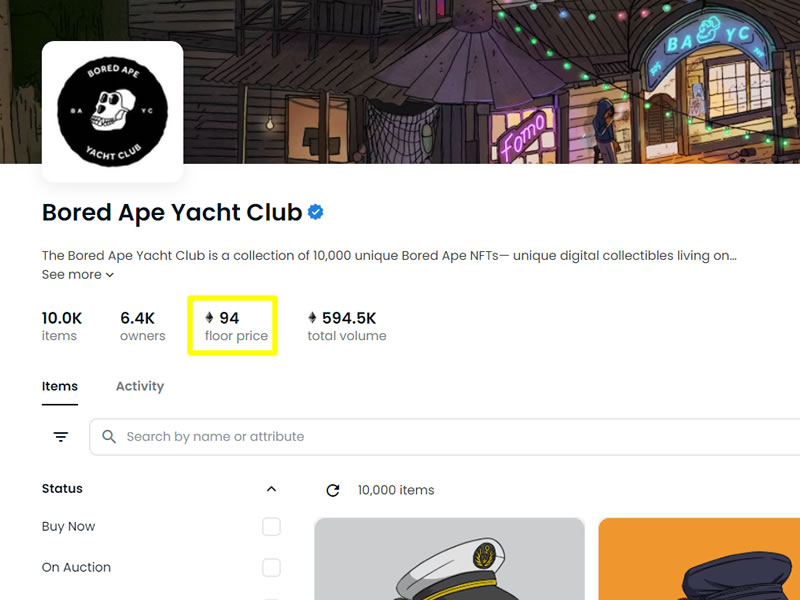
Only one NFT in the collection of 10,000 is priced at 94 ETH, the next lowest priced NFT is 96 ETH, then 96.2 ETH, then 98 ETH etc.…
Rare Bored Ape Yacht Club NFTs are on sale for over 1,000 ETH ($2million!).
What does ‘Sweep the Floor’ mean?
If you have visited any NFT Collection’s Discord channel or read through their Twitter posts, or the posts of the collection’s NFT holders, you may have come across the term ‘Sweep the Floor’.
Fortunately, you can leave the broom in the closet.
Sweep the floor is a request to NFT holders and potential NFT buyers to buy the lowest priced NFTs to raise the floor price.
Let’s look at how this works.
Going back to the Bored Ape Yacht Club collection here are the lowest priced NFTs for sale. The lowest priced NFT, as we saw, is 94 ETH:
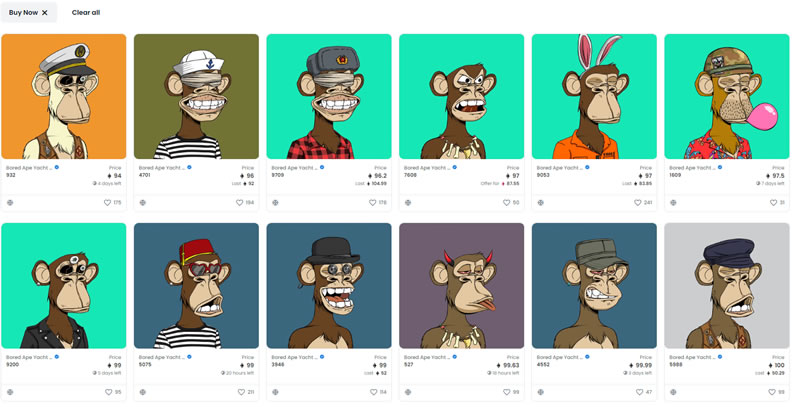
If someone purchased this NFT, then the floor immediately rises to 96 ETH as that NFT (#4701) will be the lowest priced NFT in the collection.
If NFT buyers sweep the floor and purchased the eleven lowest priced NFTs in the collection, the floor price would then rise to 100 ETH, as NFT #5988 will be the lowest priced NFT for sale.
So, why is sweeping the floor and raising the floor price important?
It’s very important to an NFT holder for the following reasons:
- It will show an increasing upward trend, which may stand out to other NFT buyers who on seeing a growing NFT in demand may decide to also buy in
- Before the 11 NFTs were sold an NFT holder may have needed to list their NFT for 94 ETH ($188,000) to attract a buyer, whereas now they can list at 100 ETH ($200,000) to attract a buyer.
A rising NFT floor means a positive growing trend and the NFT collection grows in value.
What is an NFT Floor Price – In Conclusion
An NFT floor price is the lowest priced NFT in the NFT collection.
NFT sales prices are set by the NFT holder, who can list their NFT for sale at any price they choose, therefore there may only be one NFT for sale at the floor price.
Once all NFTs at the floor price have been sold, the floor price will naturally rise until another NFT holder lists their NFT for sale for less than the current floor price.
The NFT floor price is a good at-a-glance indication as to the value of the NFT project.
Analyzing the trends of the floor price over a given period will determine whether the NFT collection is growing in popularity and demand or whether the demand is decreasing.
The NFT floor price is one of the most insightful indicators in to an NFT project, and how many NFT buyers find undervalued NFTs.
